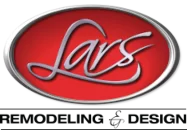When building a new home, many homeowners are considering the option of green design. Renovators also are putting more focus on creating eco friendly environments. Both groups recognize that they are achieving a healthier lifestyle, while protecting natural resources for future generations.
In keeping with the environmental movement, there has been a corresponding increase in new materials and products available for green building. An added bonus is that many of these new products and systems also save a considerable amount of money in energy costs.
Of course, the goal is to go green beautifully. Today, you can be eco-friendly without compromising your vision or your style. The bottom line is that a green house is one that is sustainable. The difference is that each decision faced in construction or renovation needs to go beyond doing anything to doing the right thing.
The RIGHT Construction
The floor plan should be environmentally sensitive from top to bottom.
- Site your house to minimize solar loss in winter and solar gain in the summer.
- Increase the opportunity for cross-ventilation.
- A sloped roof allows for solar energy panel installation, creating natural light and heat.
- Allow daylight to reach all rooms, thereby saving power.
- Decrease the need for artificial cooling.
- Install an energy-efficient heating/cooling system designed to supply continuous clean air.
The RIGHT Materials
Focus on energy-efficient, eco-friendly products that can be reused or recycled in some other form over time,
- Use eco friendly building materials such as a structural insulated panel system, resistant to mold and borate pressure treated wood, which is resistant to fungal decay and termite damage.
- Use Sill Sealer to provide a seal between the bottom plate of framing and concrete slab or sub floor. This is where small critters or drafts come though the home.
- Frame exterior walls with 2 -1/2”-inch studs, creating ample space for insulation.
- Wrap the structure in new sheathing that is layers of wood chips bonded with resins and wax.
- On inside walls use gypsum wallboard that contains up to 75 percent recycled material.
- Outside walls can use fiber-cement siding, a stable and durable product.
- Windows where booth sash and casement windows have low-e glazing hold indoor heat in winter and repel outdoor heat in summer.
- Install galvanized metal roofing. It may get hot under the summer sun but, because of its composition and light colour, it doesn’t transmit much heat. It is a long term product. It can last for 40 years or more. Much of today’s metal roofing contains recycled material.
The RIGHT Finishes and Decorating
- Here is a list of items that can keep your eco-friendly home attractive, without harming the environment:
- Walls finished using non-toxic eco-friendly paint
- Kitchen cabinets and furnishings free of formaldehyde – a toxic chemical that causes off-gassing, widely used to manufacture building materials and various household products
- Lightweight concrete countertops, made from recycled newspaper and fly ash
- Bamboo or cork flooring. Both are natural, rapidly renewable resources. Other flooring choices include recycled glass tiles and natural hypo-allergenic linoleum. As well, there are hundreds of types of wood floor choices that uphold environmental ethics.
- Countertops: man-made material of 93 percent natural quartz crystal plus 7 percent pigments and polymer resins. There are numerous options available.
- Furnishings with covers that are 100 percent organic
- Chair frames made from sustainable hardwoods and covered with fabric from natural plant based fibres such as linen.
- Fireplace and adjacent walls faced with faux-stone veneer, a recyclable man-made product
The RIGHT Mechanical Systems
Consider using these modern systems:
- Energy efficient lighting – such as fluorescent lighting or the 2use of solar energy
- Energy smart appliances – such as an energy efficient water heater or refrigerator
- An exhaust fan over the stove, to remove carbon monoxide and other gases
- Bathroom fans and windows for ventilation – to remove water vapors, reducing risks of mold and mildew and also a properly filtered system removes dirt, dust, pollen and other pollutants
- A toilet that uses about 20 percent less water than standard 1.6-gallon models
- Other high efficiency water-wise products such as dual flush toilets and shower heads which can save up to 30 percent of the water used by conventional hand showers
- A water- and energy-saving washer and dryer.
- Steam is a dream for laundering, eliminating tough stains in the wash without pre-treating, helping to sanitize towels and sheets without bleach, and refreshing clothes in the dryer.
The RIGHT Curb Appeal
- In hardscaping outside the home, use pavers made to resemble natural stone. They are energy efficient in manufacture and are easily formed into hardy random shapes with realistic tones and textures.
The RIGHT Help
- Choose a contractor that is knowledgeable regarding eco friendly design and products and manages his work with minimal construction waste or site disruption.
- It might be worth the expense to hire a building envelope consultant or an air quality consultant.
The RIGHT Attitude
- Don’t over think your decisions. Trust that there are many options. Set your goals. Be open to the right advice from an experience professional.
- Whether building or remodeling, using green materials and products creates a more eco friendly house that helps preserve natural resources, saves money and creates a healthier indoor environment.
RIGHT ON!








